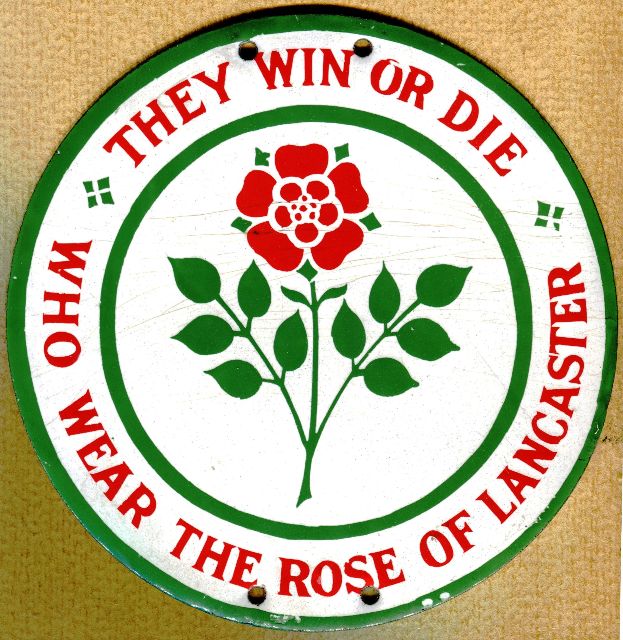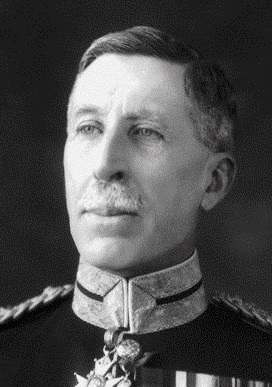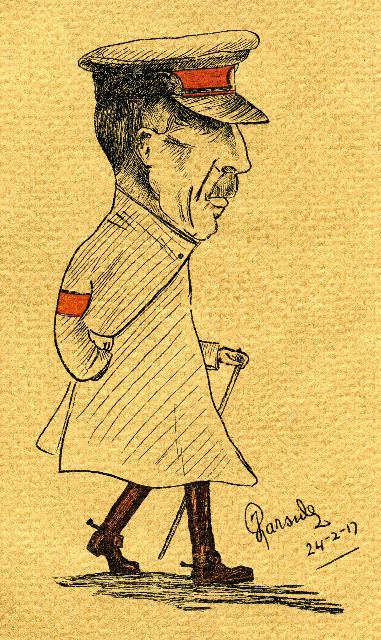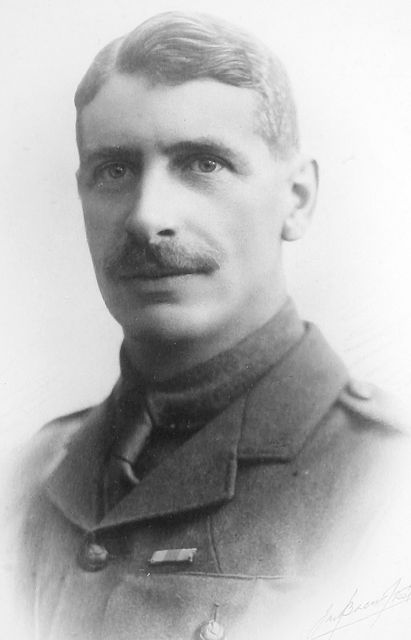The West Lancashire Division Reforms
The 55th (West Lancashire) Division Reforms and Retrains in the War Zone – January 1916
A division is one of the four best commands in the army – a platoon, a battalion, a division and an army …. A division because it is the smallest formation that is a complete orchestra of war and the largest in which every man can know you. (Field Marshal Slim, Defeat into Victory)

When the First World War (WW1) started, an infantry division of the Territorial Force (TF) had twelve infantry battalions (each about 1000 men) in three brigades and its own artillery, engineers (including signals), logistic and medical cover. In theory the division would stay together, moving between corps and armies as necessary. It was the basic building block – the ‘smallest complete orchestra of war’ to quote Bill Slim, who added that it was the largest command in which every man could know the general (GOC) whose personality would be central to leadership. In all, the division should have been about 20,000 men at full strength.
The units of the Territorial West Lancashire Division, recruited from Ulverston southwards down the coast to Warrington, were disappointed not to stay together as many soon went to France and Belgium to reinforce the British Expeditionary Force (BEF). Adrift from Lancashire roots, during 1915 they had been scattered, with their morale undermined, amongst enlarged regular brigades. Although often welcomed at battalion level by regular soldiers with whom they worked and fought, at the level of the generals it was a different matter. Historian Bill Mitchinson recently wrote of the TF in general:
In spite of what the regulars in the trenches might think, [the generals and staff] considered TF battalions to be merely attached to, rather than be an integral element of, their brigades and divisions.
and from the history of a West Lancs TF battalion, the 1/5th King’s Own (Royal Lancaster Regiment), by June 1915, they clearly felt like ‘odd job men’.
[The] summer of 1915 was a very awkward one. It seems as though we… were to be the “hewers of wood and drawers of water” to the 83rd Brigade, and both officers and men chafed at the indignity.
The North Lancashire Brigade (King’s Own from Lancaster, Liverpool Irish, Lancashire Fusiliers from Bury, Loyal North Lancashires from Preston) had stayed together but found itself sent to France in May 1915 as part of the 51st (Highland) Division which must have then had the broadest range of accents in the BEF.
Those responsible for the TF, both generals and civilians (the Territorial Force Associations – TFAs), wanted the two divisions that had been split up in France, the London Division and the West Lancs Division, to be reformed. Agreement was obtained in mid-November. Other than rumour, no news reached the battalions until after New Year. The actual reorganization started on 6th January and it took almost three weeks for the division to concentrate. Colonel Coop, the divisional historian, wrote in 1919:January and it took almost three weeks for the division to concentrate. Colonel Coop, the divisional historian, wrote in 1919:
When … the [divisional] Artillery suddenly received orders to proceed to the neighbourhood of St. Omer in mid December, 1915 and when it became known that other units of the Division had received orders to leave [their current] Divisions … rumour became persistent, and subsequently proved … true.
 The new divisional commander was Major-General Hugh Sandham Jeudwine, a gunner, who had been staff officer with Douglas Haig’s I Corps. His own staff would have some very able officers, at least three becoming lieutenant-generals and one, John Dill, a Field Marshal. Jeudwine had a reputation as a disciplinarian but was generally ‘firm but fair. Keen on thorough training carried out by properly prepared instructors, he had a good understanding of the peculiarities of the Territorial soldier and after the war was in charge of the TA as well as becoming Honorary Colonel of Liverpool’s 359 Medium Regiment RA (TA). Jeudwine’s interest in proper in-depth training and his quick realisation that he had inherited a collection of units with varied background, morale and levels of skill in the military art were to pay dividends in the five or six weeks that he was allowed to build up skills from grass roots before the division, now numbered the 55th Division, went into the trenches as a formation for the first time in mid-February 1916.
The new divisional commander was Major-General Hugh Sandham Jeudwine, a gunner, who had been staff officer with Douglas Haig’s I Corps. His own staff would have some very able officers, at least three becoming lieutenant-generals and one, John Dill, a Field Marshal. Jeudwine had a reputation as a disciplinarian but was generally ‘firm but fair. Keen on thorough training carried out by properly prepared instructors, he had a good understanding of the peculiarities of the Territorial soldier and after the war was in charge of the TA as well as becoming Honorary Colonel of Liverpool’s 359 Medium Regiment RA (TA). Jeudwine’s interest in proper in-depth training and his quick realisation that he had inherited a collection of units with varied background, morale and levels of skill in the military art were to pay dividends in the five or six weeks that he was allowed to build up skills from grass roots before the division, now numbered the 55th Division, went into the trenches as a formation for the first time in mid-February 1916.
McGilchrist, historian of the Liverpool Scottish wrote of Jeudwine:
No one who served in the 55th Division is likely to forget the tall figure in the tin hat and trench-coat who would appear in the front line in all weathers which invariable brought out at any hour of the day or night, frequently unattended, nor the quiet cross-examination which invariably and as if by magic brought out – if things were not quite as they should have been – the self-damning answer before the culprit even realised he was being examined. No one will forget, either, that for those who confessed their faults “Judy” always had the right word of advice and encouragement that made difficulties disappear and restored self-confidence. But woe betide the man who tried to bluff things out. In a moment he was laid bare to the very soul and if he were wise he did not try the same experiment twice.
 Amongst the many comments regarding training and logistics in Jeudwine’s almost illegible field notebooks, there is a peppering of comments such as ‘Captain MacSnooks – useless’, ‘Corporal O’Jones – good man’, ‘8th Bn Blankerpool’s CO – replace?’ and it cannot be imagined that the battery commander whose gas sentry was noted as having been found reading the Daily Wail (name changed) had an easy time, both for the man’s dereliction of duty and possibly his choice of newspaper. Jeudwine did not suffer fools gladly. Units left their regular divisions with some ceremony. CSM David Marples of the 1/10th King’s noted:
Amongst the many comments regarding training and logistics in Jeudwine’s almost illegible field notebooks, there is a peppering of comments such as ‘Captain MacSnooks – useless’, ‘Corporal O’Jones – good man’, ‘8th Bn Blankerpool’s CO – replace?’ and it cannot be imagined that the battery commander whose gas sentry was noted as having been found reading the Daily Wail (name changed) had an easy time, both for the man’s dereliction of duty and possibly his choice of newspaper. Jeudwine did not suffer fools gladly. Units left their regular divisions with some ceremony. CSM David Marples of the 1/10th King’s noted:
6/1/16: Got a farewell speech from Maj. Gen. Haldane, GOC. 3rd Division who treated the whole Battalion to the afternoon show at the cinema.
Edmund Herd of the Liverpool Scottish wrote (10/1/16):
Left camp 10:30 a.m. accompanied by Divisional Band and Royal Scots Pipe Band as far as … the Franco-Belgian frontier, a high honour which we appreciated very much. … Left Bailleul in horse boxes (8 chevaux - 40 hommes) - the usual transport … about 6:00 p.m. Made some tea on the primus stove about midnight. Awful job because the train was so shaky.
Later comment (1939): The primus stove which I had acquired in Poperinghe a month or two earlier was a great friend. It was so compact that I could carry it in my valise to the trenches. As the war proceeded, there was hardly a man without one. They were sold in the French shops and the canteens. We would have been spared hours of misery had we had them from the first.
The adjutant of the Liverpool Scottish has the date as 8 January:
Battalion moved off at 10:45 am and were escorted out of the area by the 3rd Division band which … sung Auld Lang Syne. A halt was made on the road for dinner which was served from 2 field kitchens sent ahead earlier in the day.
The West Lancashire field artillery brigades re-armed in the UK with more modern 18 pounder field guns and the 4.5 inch howitzers in the UK, had gone to France in September 1915, serving for several months with the Canadians so they rejoined the 55th Division with some experience of working together. TF divisions originally only had two Royal Engineer field companies (later three) and General Jeudwine had to work very hard getting the 1st West Lancs Field Company back from a regular division to get his third Sapper company. The 2nd West Lancs Company however spent its war in Gallipoli and Salonika. Both RE units were St Helens-based.
The division’s training started almost immediately as units came into the divisional concentration area behind the lines near Hallencourt
Herd was clearly not too sad to have left Ypres and Belgium behind:
11/1/16: P.T. before breakfast. Parades 9:00 a.m. to 12:30 and 2:00 to 3:30. Went to Airaines in evening, 6 kilometres away. Nice town, good shops and cafes - strange things to us after semi-civilisation in the Flanders [Belgian] wilderness.
Jeudwine had ordered all battalions to train more ‘bombers’ (grenade specialists). Herd answered the call:
13/1/16: Left X Company and joined Battalion Bombers. Grenade throwing all morning and lectures in afternoon. Good billet. Spent evening in letter writing. (Herd)
 The GOC insisted that, as well as practising entrenching and the construction of covered positions, each company should have its own ‘miniature’ range (for firing full-bore ammunition) but very close to billets, wherever they might be, as well as a long range for the battalion. . The ‘miniature’ range would probably be of similar size to the modern 30 metre range but without any elaborate stop butts. Safety was not a huge consideration; a cow or two lost in the defence of France would be of little consideration ... to all but the French peasant farmer. Lt Colonel Jonathan Davidson, commanding the Liverpool Scottish, wrote:
The GOC insisted that, as well as practising entrenching and the construction of covered positions, each company should have its own ‘miniature’ range (for firing full-bore ammunition) but very close to billets, wherever they might be, as well as a long range for the battalion. . The ‘miniature’ range would probably be of similar size to the modern 30 metre range but without any elaborate stop butts. Safety was not a huge consideration; a cow or two lost in the defence of France would be of little consideration ... to all but the French peasant farmer. Lt Colonel Jonathan Davidson, commanding the Liverpool Scottish, wrote:
17/1/16: X & Z Companies digging, also Machine gunners, making emplacements. The RE finished the parapet. Y Coy firing on the range (2 platoons). V Company doing extended order drill on hill near to the trenches. In the afternoon I went to the range. [The Sniping Officer] was getting the 500 yard range ready.
Not everything met the CO’s approval:
18/1/16: 300 men to baths by motor lorry. 200 in the afternoon. Walked over to digging ground. V Company drilling, watched them do attack practice. Not good! (Davidson).
The ranges were put to constant use. CSM David Marples of X Company of the Liverpool Scottish:
19/1/16: A fine day. Company shooting at our home made rifle range.Competition was used as an incentive to training; CSM Marples again:30/1/16: Sunday. A fine day, but very cold. Had a shooting match versus V Coy, 10 per team each 5 rounds grouping and 8 rounds rapid at our miniature range. Our Coy lost by 4 points after a very exciting struggle, with a total of 497 pts. against 501. Won our Coy Soccer match in afternoon
Training was progressive from section through platoon and company to battalion level:
7/2/16: Started and completed [practice] bombing trench and 30 yard ranges. Rode out with [adjutant] to select ground for tomorrow’s scheme and lecture. 8/2/16: Took Battalion out for attack practice. Advanced in Artillery formations, the Battalion having been made into two companies. (Davidson)
Colonel Davidson’s comment regarding making two companies out of a battalion that should have four reflects the fact that the 55th Division was seriously understrength, a problem that Jeudwine was only able to overcome in the spring and summer by enlisting the direct help of Lord Derby, firstly Director of Recruiting and then Secretary of State for War, who took a personal interest in the West Lancashire Division.
In mid-February the division went into the line near the town of Guoy but did not join the Somme campaign until August 1916. In the next article we will look in greater depth at the the division’s surprisingly modern outlook on training under General Jeudwine and also at the problems at the Battle of Guillemont in August 1916 and after.
Previous page: Territorial Gunners
Next page: 55th (West Lancashire) Division Enters the Somme